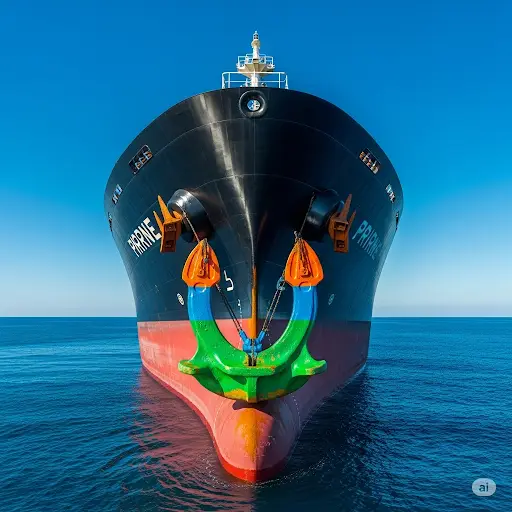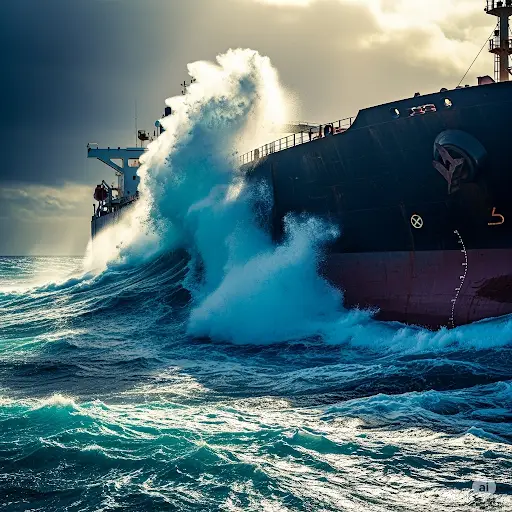The Red Sea’s New Reality: How Geopolitical Terror is Rewriting Oil’s Price Equation
This week, the global oil market has presented a fascinating, and frankly, unsettling paradox. On one hand, producers have accelerated their supply; on the other, geopolitical forces have demonstrably removed supply, or at least its secure transit. The conventional wisdom that price is dictated solely by the push and pull of barrels has been challenged by a new, more dangerous variable: the direct, escalating threat to the lifelines of global commerce. The Red Sea is not just a chokepoint; it’s the crucible where oil’s new price equation is being forged.
As we close out this tumultuous week on Friday, July 11th, in New York, crude prices are reflecting the gravity of this new reality. Despite significant headwinds from inventory data, Brent Crude is currently trading around $69.39/bbl, and WTI Crude is near $67.39/bbl. While these prices are slightly lower than earlier in the week, their resilience, especially in the face of recent U.S. inventory builds, speaks volumes about the market’s underlying concern. This isn’t merely a fluctuation; it’s the subtle, yet powerful, indication of a new premium being baked into every barrel.
The Supply Paradox: Barrels vs. Barriers
The week began with a clear signal from the supply side. The OPEC+ alliance’s decision on Saturday, July 5th, to increase oil production by a substantial 548,000 barrels per day (bpd) for August was a bold move. This acceleration in unwinding their voluntary cuts aimed to reassert their market presence and meet what they perceive as growing global demand. Their long-term goal of restoring a significant portion of their adjusted output by year-end signals a clear strategy to inject more crude into the system.
However, the reality on the ground, or rather, in the storage tanks, painted a different picture. Yesterday’s U.S. Energy Information Administration (EIA) Weekly Petroleum Status Report (for the week ending July 4th) delivered a starkly bearish figure: U.S. commercial crude oil inventories saw a massive increase of 7.1 million barrels. This build far exceeded analyst expectations and, in a conventional market, would typically trigger a sharper price decline. Coupled with a slight decrease in U.S. domestic oil production to 13.385 million bpd, the inventory data suggested a loosening market.
Yet, despite these seemingly clear supply signals and the bearish inventory build, crude prices have largely held their ground. This defiance of traditional fundamentals underscores the emergence of a more potent, overriding force.
The Red Sea’s Iron Grip: From Threat to Reality
This week, the Red Sea transitioned from a region of concern to a zone of undeniable, escalating peril. The maritime landscape has been irrevocably altered by a series of precise, and tragically effective, assaults.
The sinking of the MV Magic Seas earlier in the week was a grim indicator. But the true alarm bells began to clang with the details surrounding the MV Eternity C. Initial reports of a severe attack and casualties were compounded by Houthi claims, and now, confirmed reports by multiple maritime and international bodies, that the vessel has sunk after sustaining critical damage and suffering fatalities among its crew. United Nations statements today confirmed the sinkings and the tragic loss of life, with at least four crew members dead and others still missing, while condemning the “dangerous re-escalation.”
This is not merely an inconvenience; it is a direct assault on the arteries of global commerce. The consequences are immediate and far-reaching:
- Mass Rerouting: Major shipping lines and energy tanker operators continue to either completely avoid the Red Sea or implement severe restrictions, forcing vessels to embark on the significantly longer, more costly journey around the Cape of Good Hope. This adds days to weeks to transit times for oil and refined products from Asia and the Middle East to Europe and the Americas.
- Skyrocketing Insurance Premiums: War risk insurance premiums for Red Sea transits have surged dramatically. Reports indicate rates have climbed from 0.2-0.4% to as high as 1% of a vessel’s insured value per voyage. For a typical crude tanker, this can add an extra $1 million per trip, an overhead that quickly translates into higher costs for consumers. Some underwriters are even pausing or restricting coverage, making transit increasingly difficult.
- Effective Supply Constraint: Every vessel rerouted, every delay incurred, every increased cost translates into a de facto reduction in available supply reaching the market on time. This creates a bottleneck that no amount of increased production can easily alleviate in the short term.
The Geopolitical Risk Premium: A New Constant?
The market’s ability to withstand seemingly bearish fundamentals like large inventory builds can only be explained by the potent influence of the geopolitical risk premium. This isn’t a vague threat; it’s a tangible, quantifiable factor.
Crucially, the U.S. Energy Information Administration (EIA) recently revised its 2025 Brent crude oil price forecast upward, now projecting an average of $68.89/bbl. The EIA explicitly attributed this revision to “increased geopolitical risk” and “unrest in the Middle East.” This external validation from a highly respected source underscores our central thesis: geopolitical risk is no longer merely a background noise; it is a direct, measurable driver of oil prices.
This week has demonstrated that the market is valuing the security of delivery almost as much as the quantity of supply. When a critical choke point for 8-10% of global oil trade is under sustained, lethal attack, every barrel moving through that region carries a higher inherent risk, and thus, a higher price. This forces a re-evaluation of all traditional supply-demand models.
Demand Outlook in the Shadow of Risk
While the primary focus is on supply disruption, the demand side cannot be ignored. The IEA’s 2025 demand growth forecast of 720 kb/d remains modest. However, the Red Sea crisis introduces inflationary pressures (higher shipping costs, longer lead times) that could dampen global economic activity. Higher energy costs directly impact manufacturing, logistics, and consumer spending, potentially creating a feedback loop that could curb future demand growth. The strategic analyst must now weigh the immediate risk premium against potential long-term demand destruction.
The Strategic Outlook: Navigating the New Normal
This week has irrevocably shifted the parameters of the global oil market. We are no longer simply balancing production quotas against consumption rates. Instead, the market is attempting to find a new equilibrium where a structural geopolitical risk premium is a persistent feature of crude oil prices.
- Producer Strategy Evolution: Major producers, including OPEC+, must now factor this heightened delivery risk into their strategies. Will the fear of disruption lead them to be more cautious with future supply increases, even if the pure supply-demand balance might otherwise suggest them?
- Supply Chain Fragility Exposed: The vulnerability of global energy and trade supply chains has been starkly exposed. Companies are actively diversifying routes, seeking alternative transport, and grappling with soaring costs, underscoring the broader economic ripple effects.
- Beyond Oil: The impact extends beyond crude to LNG, refined products, and all manner of containerized goods. Inflationary pressures across various sectors are directly linked to this ongoing maritime insecurity.
As we head into the weekend, operatives must recognize that the landscape has fundamentally changed. The Red Sea is not merely a flashpoint; it’s a potent symbol of an unpredictable future where geopolitical terror directly rewrites the rules of the game.
Conclusion: The Unpredictable Future
This week has redefined the parameters of risk in the global oil market. The Red Sea is not merely a geographic point; it’s a potent symbol of an unpredictable future where geopolitical terror directly rewrites the rules of the game. For the astute operative, understanding this new equation is paramount. Stay vigilant; the next chapter of this high-stakes saga begins now.
Important Note on Volatility: The oil and gas market is experiencing significant volatility. Prices for crude oil, refined products, and associated logistical costs are changing rapidly. The figures quoted above reflect the general market situation as of Friday, July 11, 2025, New York Time. This is a fast-evolving situation, and continuous vigilance and reassessment are paramount.





